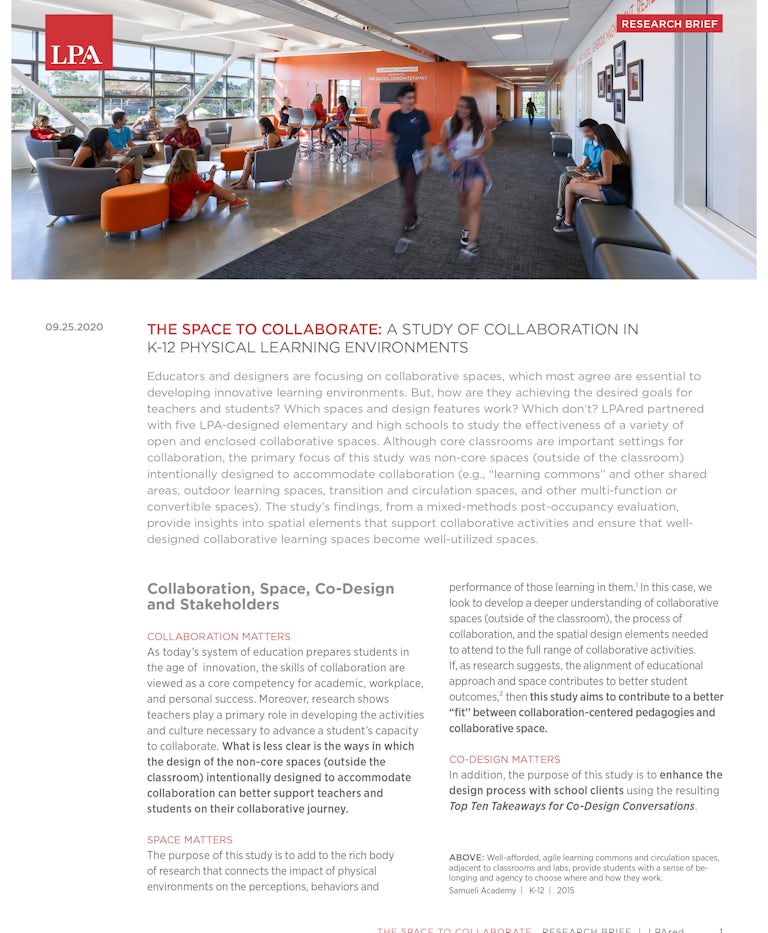Educators and designers are focusing on collaborative spaces, which most agree are essential to developing innovative learning environments. But, how are they achieving the desired goals for teachers and students? Which spaces and design features work? Which don’t? LPAred partnered with five LPA-designed elementary and high schools to study the effectiveness of a variety of open and enclosed collaborative spaces.
Although core classrooms are important settings for collaboration, the primary focus of this study was non-core spaces (outside of the classroom) intentionally designed to accommodate collaboration (e.g., “learning commons” and other shared areas, outdoor learning spaces, transition and circulation spaces, and other multi-function or convertible spaces).
The study’s findings, from a mixed-methods post-occupancy evaluation, provide insights into spatial elements that support collaborative activities and ensure that well-designed collaborative learning spaces become well-utilized spaces.















